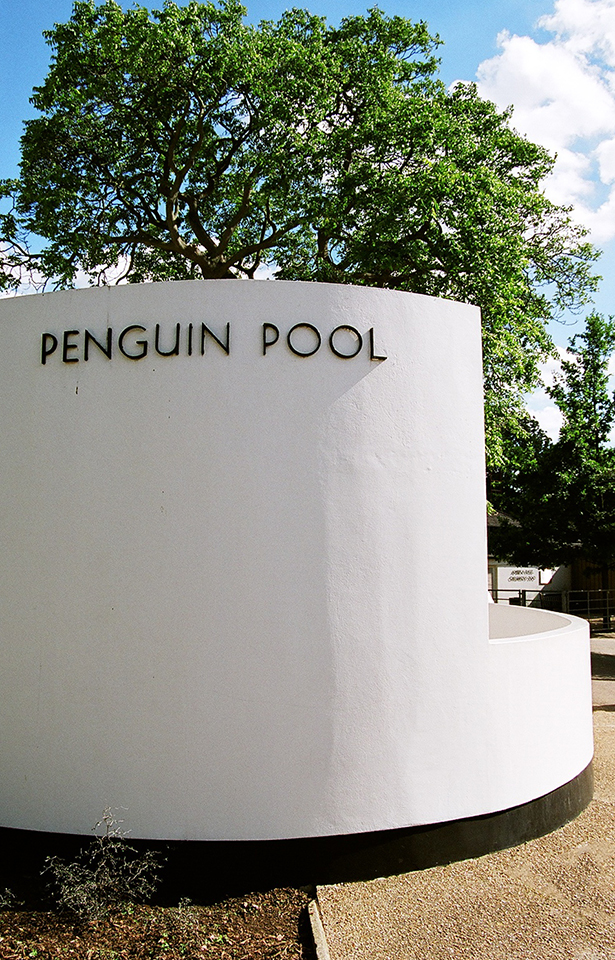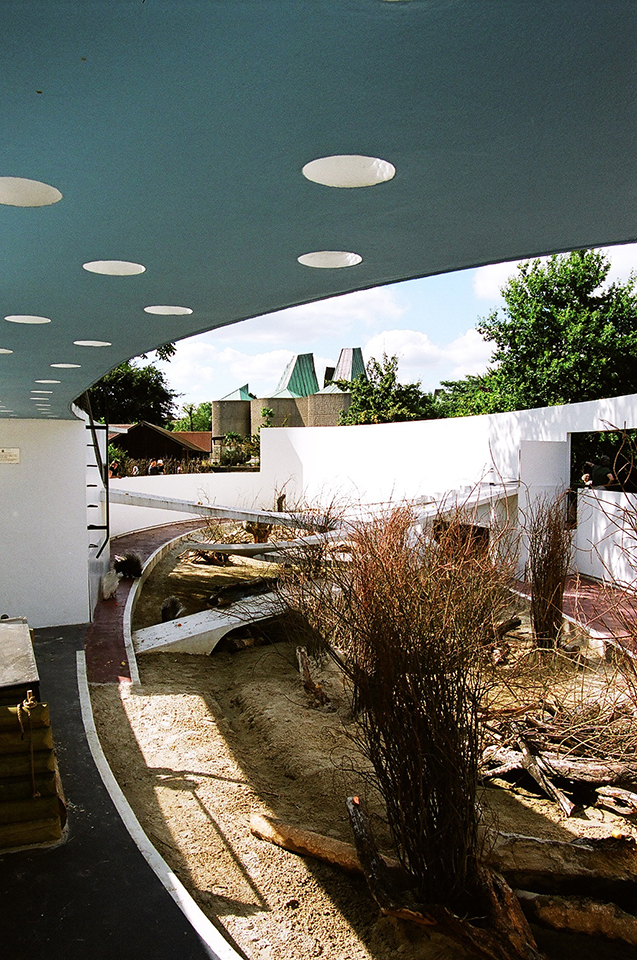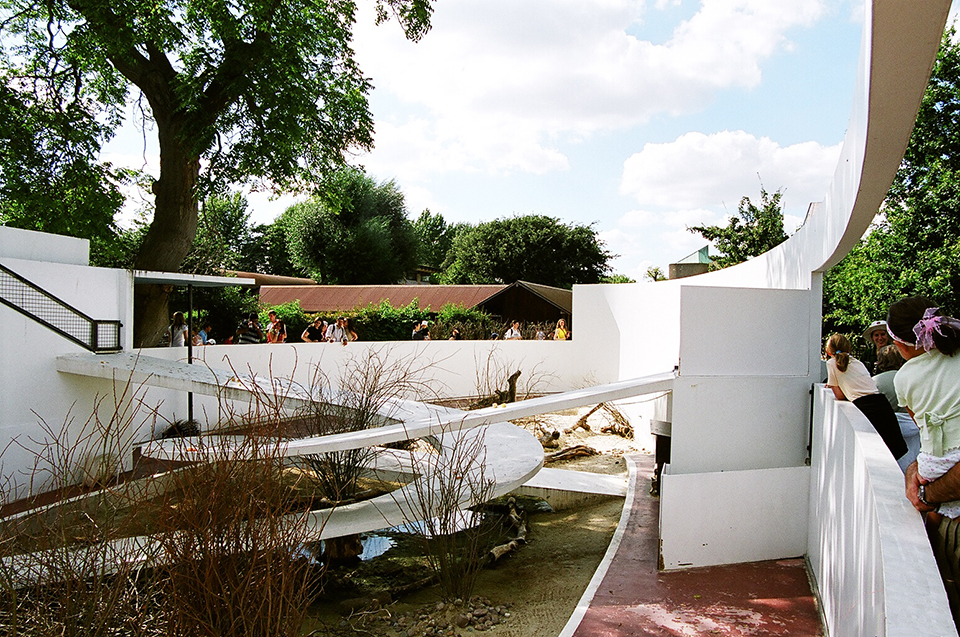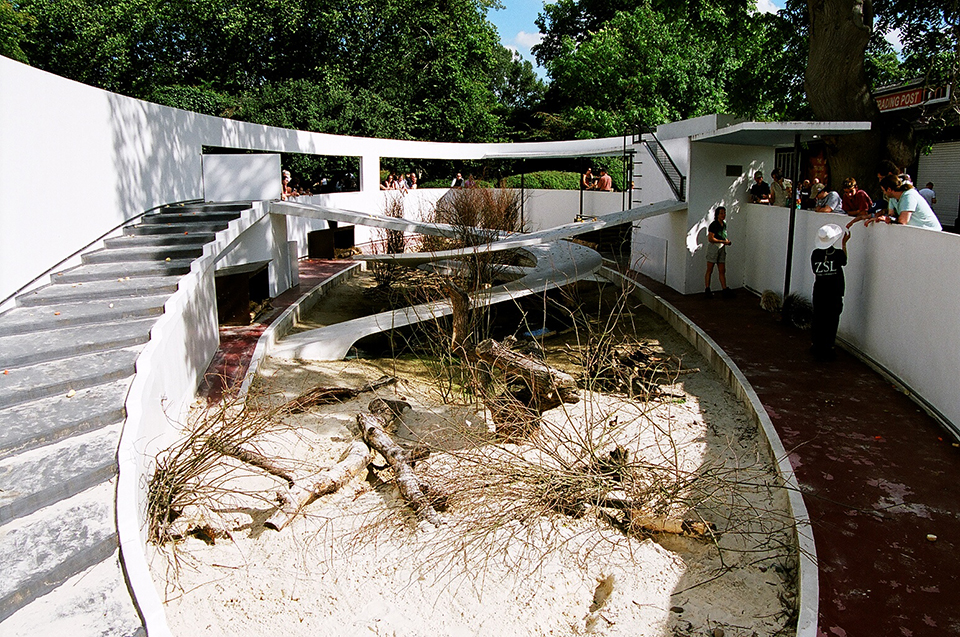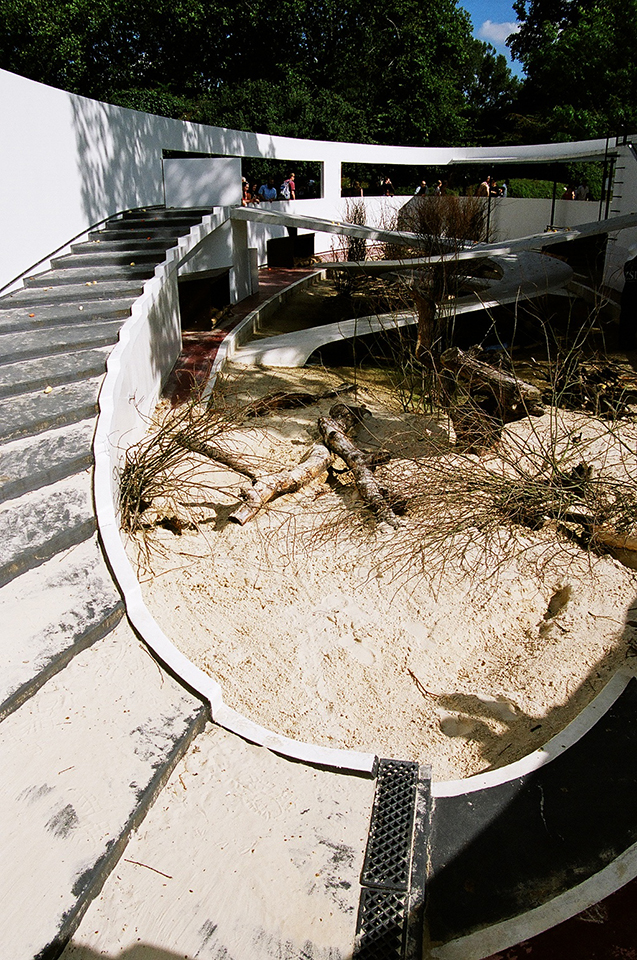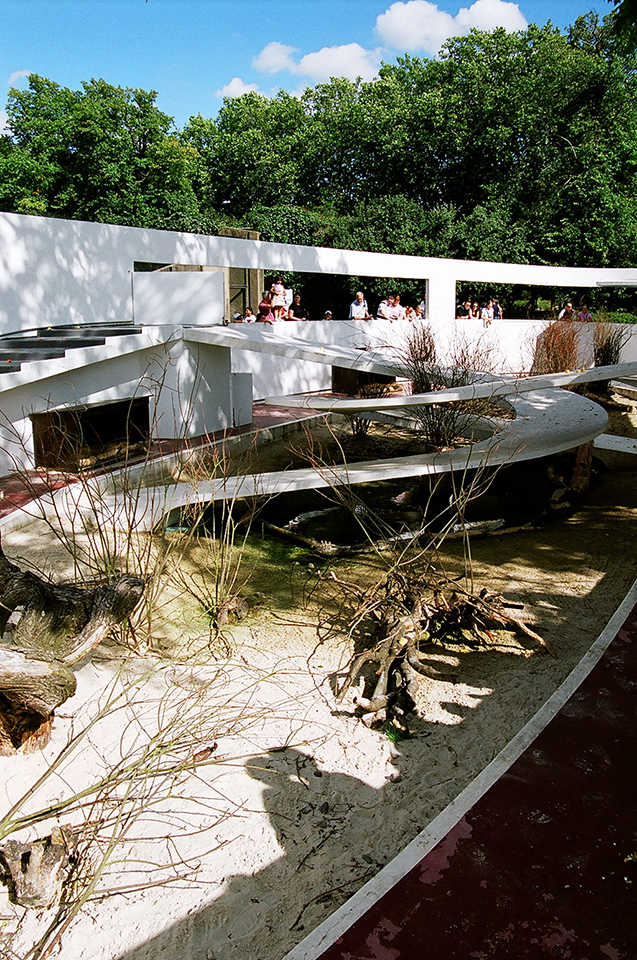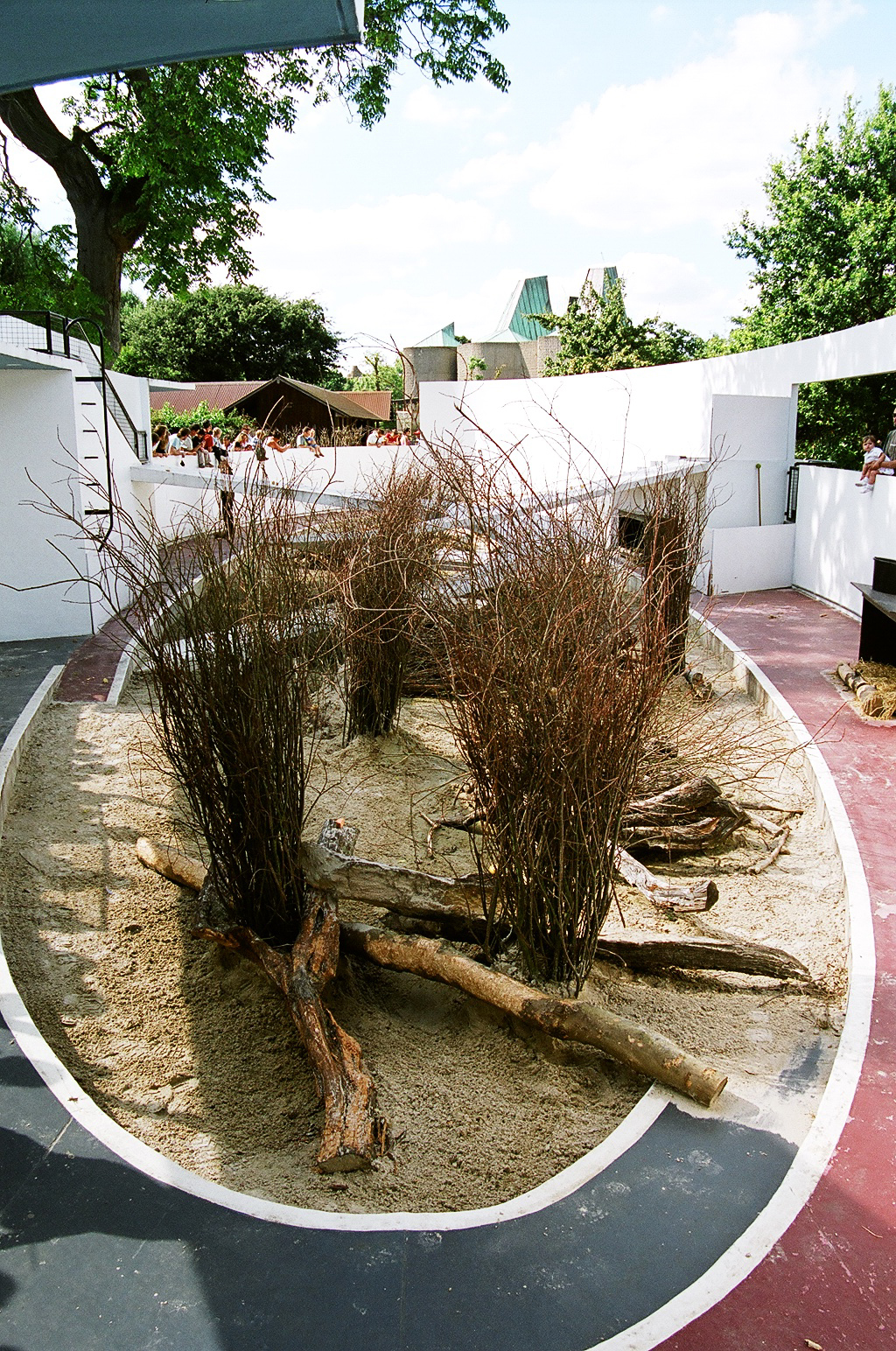Penguin Pool
1934
The Penguin Pool at London Zoo is regarded as something of a landmark project. It was created by emigré Berthold Lubetkin and the Tecton Group in collaboration with structural engineer Ove Arup. Bereft of penguins since 2004, it has housed porcupines and alligators, but alas is now empty. The curved ramps above an elliptical pool were originally designed for Antarctic penguins with advice from biologist Julian Huxley, but the zoo switched to house Humbolt penguins who were used to a completely different habitat to that of their southern cousins. Its realisation, in 1934, was one of a handful of early modernist structures that dramatically influenced British architecture to follow. The ramps were particularly noted for the advancement of reinforced concrete slabs as an effective form and underwrote Arup’s assertion that structures could be cast as single units, rather than casting columns and beams separately as was the typical practice at the time. The reinforcement too was innovative in its use of torsion, created by a helix of steel bars. The trapezoidal section of the ramps made them appear especially slender at their edges, yet strong enough in the middle. At the top of one of the ramps was a glass fronted diving tank intended to show the ‘penguin’s agility under water’. Tecton also designed other buildings at the Zoo, including a Gorilla House (1933).
